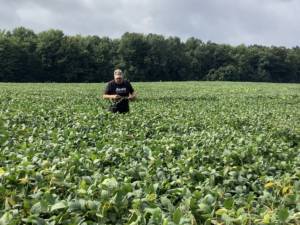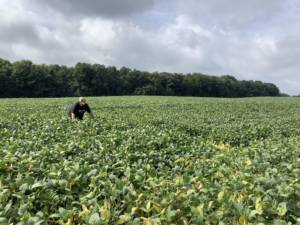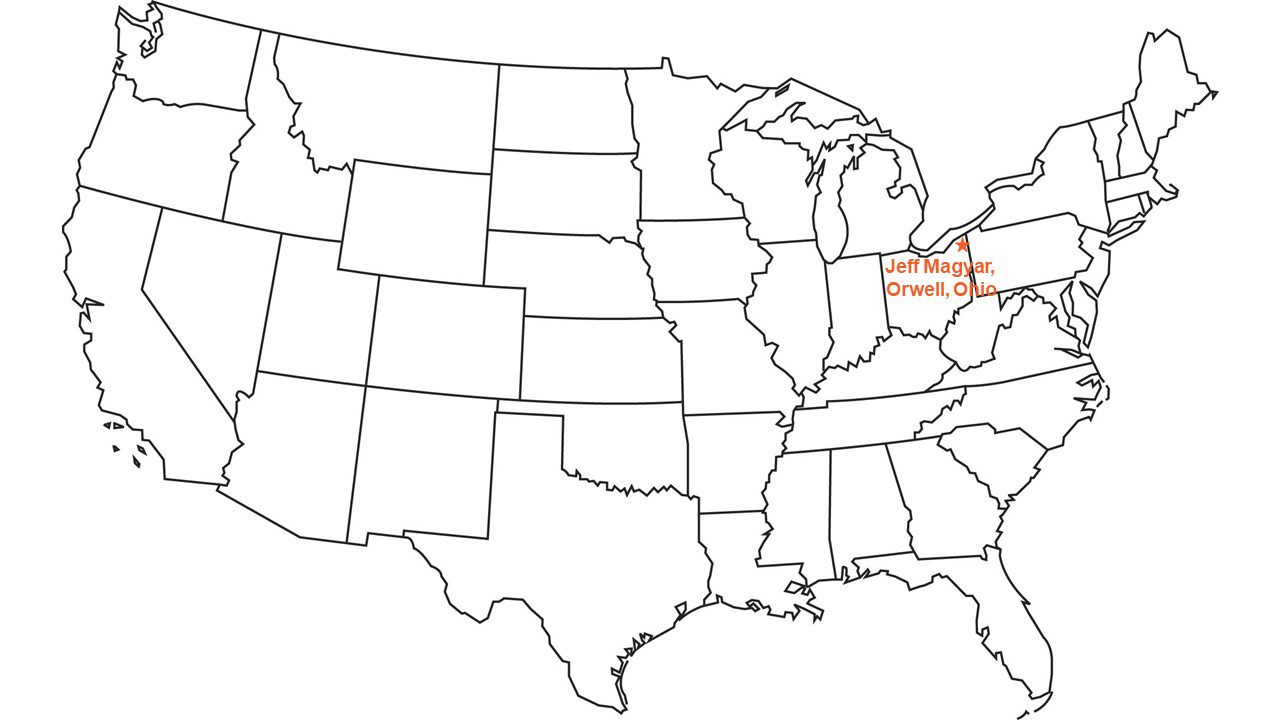 As one of the U.S. farmers raising high-quality, food-grade soybeans, I focus on protecting the quality of those soybeans throughout the season. In fact, every morning, I scout all of the fields growing our 600 hectares, or 1,500 acres, of soyfood beans.
As one of the U.S. farmers raising high-quality, food-grade soybeans, I focus on protecting the quality of those soybeans throughout the season. In fact, every morning, I scout all of the fields growing our 600 hectares, or 1,500 acres, of soyfood beans.
At a minimum, I drive by every field to see how they look. During the growing season, I frequently check field edges for signs of insect, disease or weed pressure that needs to be managed. When I see a potential problem, I scout further to get the information I need to make a management decision.
So far, the fields have looked good this season. I have not seen any signs of soybean aphids, which would show up in early to mid-August if they are going to be a problem. I haven’t seen evidence of stinkbugs or Japanese beetles feeding on the soybeans. That’s a positive, as I minimize use of insecticides as much as possible. When insects do become a problem, I try to control them quickly by just treating the edges of the fields where they enter it, in an effort to use just the insecticide needed.
This year, I haven’t seen any disease pressure, either. At this time of year, I watch closely for signs of white mold. It’s a disease that can’t really be treated, but it can cut yield and quality significantly. I am thankful it hasn’t yet appeared. If it doesn’t show up in the next week or so, it shouldn’t be a problem this season.
Weather Impact
 I also pay close attention to the weather, an uncontrollable factor that impacts crop quality. For example, we received excessive rain the third week of July, which slowed and stunted crop growth for a bit. The soybeans have recovered from that.
I also pay close attention to the weather, an uncontrollable factor that impacts crop quality. For example, we received excessive rain the third week of July, which slowed and stunted crop growth for a bit. The soybeans have recovered from that.
Since then, the fields were getting dry, but a well-timed rain in early August helped. Additional rain later in August should make this crop, allowing the set pods to fill well.
I have learned that applying herbicides or fungicides in excessive heat can burn the crop leaves, which also impacts yield and seed quality. Fortunately, we haven’t had many days with temperatures above 32°C, or 90°F, when that becomes a challenge. And other than herbicide applications to control weed escapes, I haven’t had to treat for much this season.
Sustainable Management Practices
My sustainability practices help manage fields to protect soybean quality, as well. Winter wheat and oats were harvested in mid-July. Then I repaired features in those fields like waterways and banks that help manage excess water. In mid-August, I plant cover crops in those fields to improve soil health and quality. Those fields will be planted to soyfood beans next season, so this work helps protect the quality of next year’s crop.
Next spring, depending on the weather and planting conditions, I hope to plant those soyfood beans directly into the cover crop. The cover crop will be terminated either with light tillage or herbicide. If slugs living in the mat of organic matter on the soil surface become a problem, I often choose tillage to terminate the cover crop and control them without using a chemical treatment.
Current Crop
Based on what I have seen so far this season, I expect an average or slightly above average soybean yield with good quality. Once we get the rain needed to finish the crop, I will be hoping for a dry fall moving into harvest.
Of course, that is unpredictable. While my fields have gotten the moisture they need this year, just 16 km, or 10 miles, to the south, farmers got excessive rain followed by very dry conditions, which isn’t good for any crops.
The soybeans are a bit shorter than average this season, which means they are less likely to lodge, or fall over. Soybeans that are standing well are easier to harvest. The hope is that soybean harvest will start in late September. I look forward to sharing how harvest progresses for us at the end of this season.
This soyfood bean update is funded by the soy checkoff. To share or republish part or all of this article, please link to the original article and credit www.USSOY.org.

